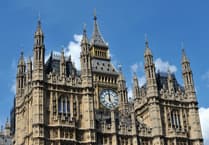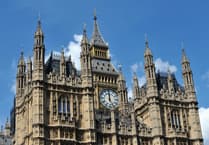WANTING the financial security of our own home is only natural. But getting on the housing ladder is not easy, particularly here in the South West where properties are expensive relative to wages.
The Government has done some simple, practical things to help, such as abolishing Stamp Duty on properties under £300,000 for first-time buyers but it has also set up bold schemes, underpinned by a significant amount of public money.
Help to Buy for example, has been the biggest programme to aid home ownership since the 1980s, enabling families to purchase a new-build property with just a five per cent deposit and a loan of up to 20 per cent from the government (interest free for five years). Within Teignbridge, more than a thousand families have been helped onto the housing ladder this way.
In April 2021 the Chancellor went further and announced a Mortgage Guarantee Scheme, which provides a government-backed guarantee to lenders who offer 95 per cent mortgages to credit-worthy first-time buyers of new-build properties.
In November the Government launched First Homes – a scheme that enables first-time buyers and keyworkers to purchase designated new-build properties with a discount of at least 30 per cent.
While these schemes have made a difference, the biggest challenges to helping families onto the housing ladder come at a local level because building homes is often controversial.
For every family that wants a new home to be built so that they might have the opportunity to buy it, another doesn’t want more housing built near them. For every developer that delivers the additional infrastructure they promised, another finds a reason not to, leaving communities sceptical when the next proposal comes along.
There is no simple solution, but having recently visited Moretonhampstead where 35 new homes are under construction, two things were obvious.
Firstly, the parish council and the developer had clearly worked together closely on the plans so the type and design of homes will genuinely help to meet local housing need.
Secondly, the development has been built on a brownfield site so no green space has been lost. This positive local attitude, coupled with a genuine consideration for our environment, is how we will get the right kind of homes built in the right places. Neighbourhood Plans have a role to play in this and there will be a referendum in Bovey Tracey on February 3 to adopt (or not adopt) theirs.
Because it will not always be possible to build every new home on a brownfield site, we also need to look at how the environmental impact of losing a field to new homes can be offset.
Last week the Government launched an ambitious “Biodiversity Net Gain” consultation, outlining plans for developments to be legally required to leave biodiversity in a better state than before, through the provision of natural habitat and ecological features.
The goal of helping our children and grandchildren afford a home of their own and the goal of protecting our environment do not have to be incompatible.
More from Mel at: www.melstridemp.com .





Comments
This article has no comments yet. Be the first to leave a comment.